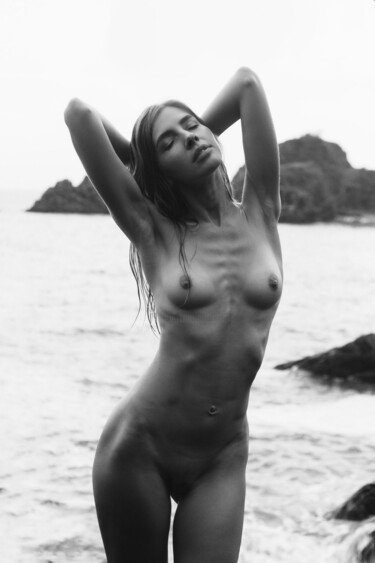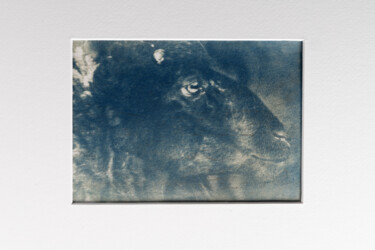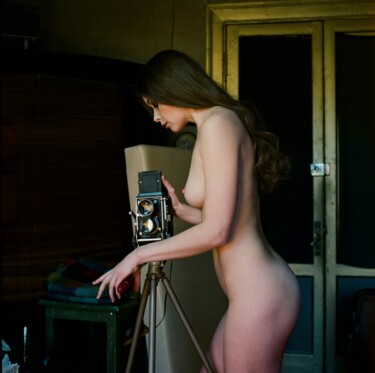533 Fotografie originali in vendita:
Qual è l'origine della tecnica fotografia a pellicola
La fotografia su pellicola è una tecnica fotografica che consente di ottenere fotografie attraverso un processo chimico che comprende l'esposizione di una pellicola fotosensibile, quindi il suo sviluppo e, eventualmente, la sua stampa su un supporto fisico. Si oppone alla fotografia digitale che è decollata negli anni 2000 con la comparsa delle fotocamere digitali.
Stai cercando Fotografie originali in vendita ?
Esplora tutti gli stili e le tecniche della fotografia artistica: fotografie contemporanee, street-art, arte astratta, arte figurativa, fotografie di paesaggi, light painting, fotografia cinematografica, fotografia digitale, fotografia in bianco e nero... Artmajeur si rivolge a tutte le sensibilità artistiche e celebra la bellezza al tuo fianco da 20 anni con più di 2 milioni di opere d'arte contemporanea da scoprire... o acquisire! Il riferimento mondiale per le fotografie artistiche contemporanee. Scopri le opere di artisti contemporanei di tutto il mondo per arredare i tuoi interni con classe! Semplice amante dell'arte o collezionista confermato? Trova la fotografia o l'istantanea preferita che migliorerà davvero la tua decorazione. Artmajeur ti offre opere originali, edizioni limitate e stampe d'arte dei migliori artisti fotografici contemporanei al mondo. Su Artmajeur, le fotografie artistiche sono selezionate da appassionati ed esperti del mercato dell'arte. Selezioniamo per te le opere originali di fotografi di tendenza, premiati e riconosciuti, nonché i nuovi valori emergenti nel campo dell'arte contemporanea per guidarti e aiutarti nel tuo processo di acquisto di fotografie d'arte online.
Discover contemporary Analog photography Photographs on Artmajeur
Contemporary analog photography photographs are a type of original artwork that has been gaining popularity in recent years. They are created using traditional film cameras and techniques, and are often printed on a variety of supports and materials such as paper, canvas, or metal.

©2023 Jean Turco
Origins and History
Contemporary analog photography has a rich and varied history that spans over a century. It originated in the late 19th century with the invention of the first camera by George Eastman, which marked the beginning of popular photography. Over the decades, photography has evolved from a cumbersome and time-consuming process to a more streamlined and accessible medium. It gained popularity in the 60s and 70s, with the rise of experimental and avant-garde art movements that sought to push the boundaries of traditional photography. Today, analog photography is experiencing a resurgence, with many artists and photographers rediscovering the beauty and uniqueness of traditional film processes.

©2023 Clara Diebler Artista rappresentato da Galerie Sentiments
Evolutions of theses works in the contemporary art market
Contemporary Analog photography has recently undergone a significant evolution. This resurgence of film photography has been largely driven by the desire to create something unique and tangible in an increasingly digital world. The use of traditional film processes and techniques has become a means of artistic expression for many photographers, resulting in a wide range of styles and approaches.

©2023 Michel Perrin Artista rappresentato da ArtRewards
Related Famous Artists
Contemporary analog photography has been embraced by many artists today, who use this traditional technique to create unique and striking works of art. Among these artists are:
Sally Mann, an American photographer known for her haunting and evocative images of the American South. Her work often explores themes of memory, family, and mortality, and she has received widespread critical acclaim for her powerful and intimate portraits.
Alec Soth, another American photographer, who is particularly well-known for his large-format images of the American Midwest. His work often focuses on the everyday lives of ordinary people, capturing the beauty and melancholy of the world around us.
Wolfgang Tillmans, a German photographer who has gained international recognition for his innovative and experimental approach to analog photography. His work spans a wide variety of genres, from portraiture to landscape photography, and is characterized by its bold use of color and composition.
Nan Goldin, an American photographer whose raw, unflinching images of drug addiction, sex, and violence have made her one of the most controversial artists of our time. Despite the controversy surrounding her work, she has been widely praised for her unflinching honesty and her ability to capture the raw emotions of her subjects.
William Eggleston, an American photographer who is widely regarded as one of the pioneers of contemporary color photography. His work often explores the beauty of the mundane and the everyday, and his use of bold, saturated colors has had a profound influence on the world of photography.
Overall, these artists demonstrate the power and versatility of contemporary analog photography, and their work continues to inspire and challenge us today.

©2006 Luz Artista rappresentato da Galerie Art & Style
Notable contemporary Analog photography Photographs
Analog photography has been a beloved medium for many contemporary artists, who have created stunning and evocative works that capture the beauty of the world around us.
One such artist is Sally Mann, whose photograph "Immediate Family" (1992) features her three children in various states of undress and play. The image is both intimate and provocative, showcasing the beauty of childhood innocence while also exploring themes of sexuality and identity.
Another iconic work of analog photography is Nan Goldin’s "The Ballad of Sexual Dependency" (1986), a series of photographs documenting the lives of Goldin’s friends and lovers in the New York City art scene during the 1980s. The images are raw and intimate, capturing moments of joy, love, and pain with unflinching honesty.
For something a bit more abstract, there is Vik Muniz’s "Pictures of Chocolate" (1997), a series of photographs that use melted chocolate and other food items to create intricate and mesmerizing patterns. The images are both playful and thought-provoking, challenging our perceptions of what art can be and how we interact with everyday objects.
Finally, there is the work of Cindy Sherman, whose "Untitled Film Stills" (1977-1980) series features the artist herself in a variety of cinematic roles, from the film noir femme fatale to the innocent ingénue. The images are both a commentary on the portrayal of women in popular culture and a celebration of the power of self-expression through art.
In all of these works, we see the power of analog photography to capture the essence of the human experience, to evoke emotion and provoke thought, and to celebrate the beauty of the world around us.

Valerius Geng
Fotografia | 6,7x6,7 cm

Andrey Trufanov
Fotografia | 45x30 cm

Clara Diebler
Fotografia | 75x50 cm

Henri Odabas
Fotografia | 60x60 cm

Gaspard De Gouges
Fotografia | 40x40 cm

Liliia Kucher
Fotografia | 28x26 cm

Stephan Larroque
Fotografia | 14,2x20,7 cm

Pascal Biblocque
Fotografia | 160x160 cm

Leopold Brix
Fotografia | 37,1x51,3 cm

Karl Alinghi
Fotografia | 30x45 cm

Alexander Demakov
Fotografia | 50x50 cm

























